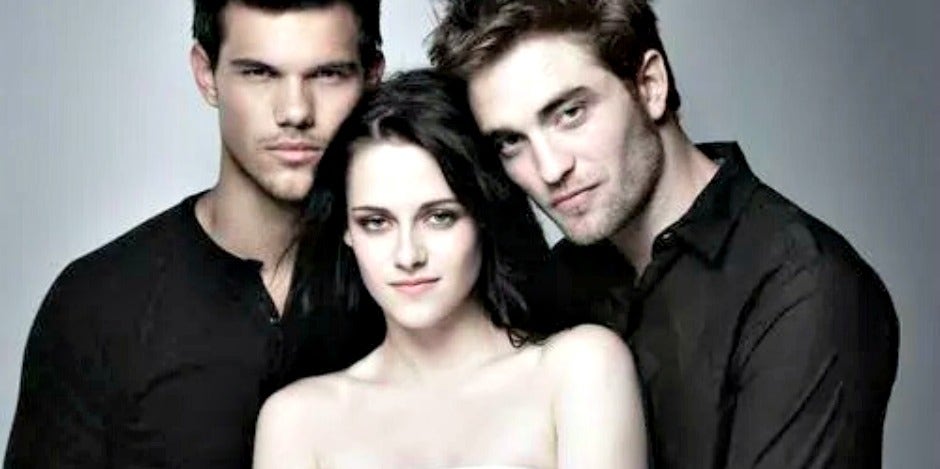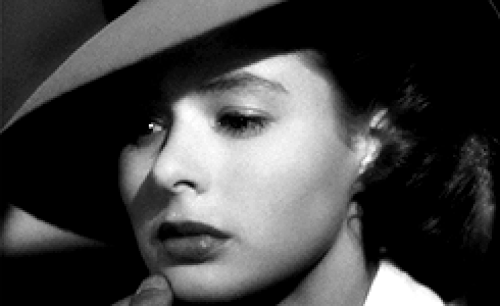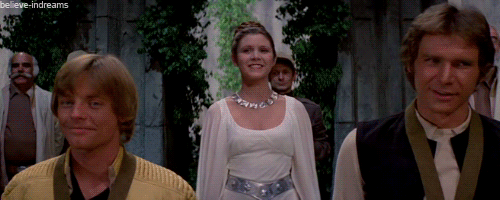Why Women Love The Fantasy Of Two Men Fighting For Her Heart
Hint: It's not as simple as the desire for attention.
 weheartit
weheartit Movies and romantic novels targeted toward a female audience often have an interesting plot twist centering on a triangle where two men are in love with the same woman.
This plot is incredibly common, and one can see it in the film Casablanca, where Humphrey Bogart and Paul Henreid both love Ingrid Bergman.
Bergman loves them both as well, and the anguish of the film, is her struggle to decide between the two.

Why is this plot so common, and what does it say about women, men and romance in general?
There's no single reason, but rather many reasons that tap into the ways in which men and women fall in love, select mates and prefer to feel desired.
Having a threesome with two women is regarded by as a universal favorite sexual fantasy for a majority of men. Despite this, studies have shown that Internet pornography, targeted mainly towards men, is actually dominated by images of single women with multiple men. Men’s minds and imagination might desire two women, but their bodies react to the cues of sperm competition, and the image of a single women being sexual with multiple men actually triggers greater sexual arousal in the man’s body.
This might reflect our history of evolution, where sexual responses and behaviors developed in a non-monogamous environment and men and women were competing (whether they knew it or not), not just for sex, but for control of conception. Men react to these cues of sexual competition unconsciously, and it is likely that women do as well.
In theTwilight saga, Bella is torn between the love of Edward the vampire and the passion of Jacob the werewolf — which makes the screen practically explode!

Additionally, fascinating research has suggested that women in monogamous relationships are more likely to be tempted to be unfaithful when they are ovulating.
Further, they’re more likely to be orgasmic when they are with a man other than their primary partner, especially when this other man represents what is sometimes called the “cad” type, or the kind of man you might have a fling with, but never marry.
The cad is that assertive, brash man who jumps from bed to bed, shows high levels of testosterone influence in his body and behaviors, as opposed to the “dad” type, that kind, caring man who is waiting at home, who can provide for a woman and (their) kids.
When the woman returns home from the cad, even that dad type is unconsciously motivated to compete, and if he has sex with her, it’s likely to be more vigorous and rough in a way that might actually prevent, or even dislodge, a fertilized egg from an affair.
And, according to some research, women who have been sexually unfaithful often wait at least 24 hours before having sex with their primary partner. These women have stated their reasoning was to avoid detection and to be respectful of their partner — but, waiting 24 hours may also increase the chance of conception by that other man, rather than her primary mate.
In my book, Insatiable Wives, Women Who Stray and the Men Who Love Them, I describe the literary tradition of these triangular love plots as related it to these sexual competition dynamics.
One of the earliest stories of this is the love tale of Tristan and Isolde, where Isolde is married to another, older man, but loves young Tristan. That story was incorporated into another, more famous tale, that of King Arthur. King Arthur loved and married Guinevere, who eventually fell into passionate love with the knight Lancelot.
Indeed, it was during these ages in Europe, when the concept of “courtly love” was promoted, and married women in court explored (ostensibly nonsexual) relationships flirtations and dalliances with young men who quoted poetry and brought them flowers.
Whereas men compete to spread their genes far and wide, the theory goes that women may be more selective.
This theory is under some attack currently, but there’s good evidence that when a choice is available, females of many species may choose to mate with “stranger” males from outside tribes or groups. Maryann Fisher has written a spectacular piece where she examines the ways in which romance novels hit onto themes that reflect female triggers for the selection and acquisition of high quality mates. Following this theme, it suggests that the competition of two men for a woman’s affections, dominant in romance plots, may trigger a woman’s desire for the best quality man she can get.
If two men are competing, by choosing the winner she guarantees better quality.
Besides these mating dynamics, there are unconscious psychological issues at play as well.
Being loved and desired by two men is more exciting and stimulating than loved by a single man. In Insatiable Wives, I described the “Queenbee phenomenon,” and the powerful feelings of attractiveness, self-worth and confidence that some women get from being desired by multiple men.
In the Greek legends, Hercules was put to seven impossible tasks to prove his love. When a man competes with another for a woman’s hand, he both tests and proves the depths of his love. After all, if he didn’t truly love her, would he work that hard?
George Lucas crafted the Star Wars saga to map onto the “heroic arc” described in Joseph Campbell’s work as the prototypical plot embedded in most tales of human heroes. This tale focuses on a young male figure, of unknown origins, who gains the power and confidence to fight evil and defend his people. The same story is embedded in the tale of Harry Potter, and even in the story of Christ. This dynamic focuses on males, and may even be more engaging to males, as my colleague Peter Gray explores in this essay.
But, whether consciously or unconsciously, Lucas also included a parallel female-focused arc, a subplot that triggers female interest and excitement, placing a woman at the apex of the attention and desire of multiple men.
In Star Wars, Leia is torn between her interest in sensitive Luke (yes, he later turns out to be her brother, but we’re not there yet) and brash Han Solo.

Not only does the woman increase her chances of “getting” a better mate, but she also increases her power, her confidence, and her own value by having the ability to choose.
YourTango may earn an affiliate commission if you buy something through links featured in this article.

